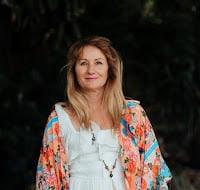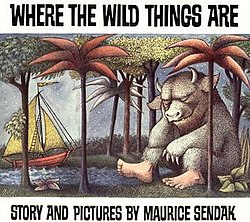Menu

Let me introduce you to Karen Hendriks, who always has a smile on her face and a sparkle in her eyes. Living by the sea at Shellharbour, NSW, provides a dreamy, calm landscape for penning her stories for children. She loves to empower kids with words that spark new imagination from family heritage to themes of loss and love. I have met Karen at book launches and museums in Wellington, New Zealand and working hard to write Feathers, a picture book, at a country retreat in Montville, Qld. Above all, Karen’s background in primary teaching enabled her to extend herself in many other creative ways.
Marg, a story shines for me when I can connect emotionally to the voice, characters, setting and story arc. Time stands still when I’m inside a story, living and breathing it. This is both as a writer and reader. I find my best writing is when I’m suspended in time and feeling the story. I love quirky, heartfelt, quiet stories. I adore reading funny stories, but my creative pull is creating those quieter stories.
Although I’m friendly and sociable, I’m also quiet and reserved, which explains the type of stories I like to create. I love stories that make me think, be curious, and question and learn.
My inspiration does come from anywhere, but it always connects back to me on a personal level to memory or something I love. For Go Away, Foxy Foxy, my inspiration was my childhood pet rabbit Thumper, kids with paper poppers from when I was a teacher, vanilla ice cream, velvet fabric and Valentine’s Day. Feathers was inspired by my scary brush with sepsis and my love of feathers. Home was inspired by my family heritage and a heart locket that has been passed down from generation to generation to me.

The writing journey is the place where real learning takes place. Writing teaches you so much about yourself – your strengths and weaknesses become obvious. I have learnt to be patient and courageous, persistent, resilient, and more confident. When you write for children, you need to be authentic and know that it’s all about the story, not you. Along the way, you learn what type of children’s author you are and the type of stories you like to write. We place ourselves in boxes, and it’s up to us to open them and learn new things. Writing teaches you not to box yourself in. Perhaps one of the most surprising things I have learnt is that when you put yourself out there as a writer, other people watch you and are inspired by you.
My love of picture books and the dream to write was shaped by my university years and from being a teacher. Everything you do in life leads to the next thing you decide to do.
While I was at university, I was involved in creating a picture book with the Aboriginal community of a local school, and I worked in the Teacher Resource Centre at the university.
Teaching further fuelled my love of picture books, and I hoped to write my picture books one day. Picture books are the perfect tool to use in any classroom with any age.
I’ve had to stop being a teacher to become a creator. I’ve learnt not to write like a teacher. I always said to my students, ‘Find what you love and do it.’ And that’s precisely what I’m doing too.
4. Can you describe the story of Home, a picture story. What style of illustration features in this book?
Home is a picture book that pulls on heartstrings. It’s inspired by my family history and a little village in the Sudeten Mountains that was once called Wunschendorf., now called Srbska. It’s where my mum, grandmother, grandfather, and previous generations were born—my heart locket, from the village, is a pivotal character in the book. Between 1945 and 1946, three million Sudeten Germans were expelled from the Sudeten Mountains to Germany, Austria, and the Soviet Zone. It was a single population’s most significant forced refugee movement in the 20th century. This happened to my mum as a tiny baby, my grandmother and great grandmother.
Home is about losing a home, finding a new home but never forgetting the home you lost.
War ends, yet its dark shadow remains. A family is forced to flee their home. As they journey through hunger, long cold nights, and homelessness, a heart locket whispers words of hope. And a country that far away calls for those that are no longer wanted. It offers new beginnings and a special place once more to call home.
Alisa Knatko, the illustrator for Home, has created stunning pencil and watercolour illustrations that are hauntingly powerful. The book has a European look and feels, which is perfect for the story. Alisa lives in St Petersburg in Russia, which is not too far from the village my mum was born in. This makes the book feel authentic.

5. Where do you find the most relaxing place to write? Why?
Sometimes to focus and not be distracted, I escape to a local coffee shop or library. Other times, I write in the lounge or at the dining table. I do have a study that I work in, but my husband has his study next door, and I wouldn’t say I like interruptions.
Being in my local community is good for my soul, and I can socially connect with others. Being at home all the time is isolating, so a mix of working at home and out is perfect for me as a writer.
6. Loving language is essential for an author. Do you have any favourite words? A famous picture story from childhood?
Language is one of my strengths as a writer; I love how words work together. I can spend days, weeks and even months trying to find the right word in a particular place in a story. I don’t write in rhyme, but I use many other techniques to make my writing shine. I don’t plan my writing techniques in my stories; I use them organically. I don’t have favourite words because I don’t believe in using the exact words all the time. I do like creating my own new words; they make me smile.
My school didn’t have a library, so the only children’s books available were the school readers and textbooks. I discovered children’s books myself. I used to save my pocket money to buy the Enid Blyton series – Famous Five and Secret Seven from the local news agency. I adored Little Women and The Diary of Anne Frank. A library opened in our town, and I loved it. But I didn’t visit as often as possible because I started working at a young age. I will always adore Where the Wild Things Are and Where the Forest Meets the Sea.

7. Why do you think giving young readers a strong ending in a story is essential?
A young reader needs to feel satisfied and that the story is complete. I feel let down when an ending ends abruptly, and so does a child. Often the conclusion will tie in with the beginning or leave the child thinking for themselves about other possibilities. An ending shouldn’t limit a child’s thinking but expand it somehow. Often a strong finish will lead a child to make to their conclusions and viewpoints.
8. Have there been challenges for you in writing for children?
There are always challenges when you write for children. It can be both frustrating and empowering. Often writers gravitate to the same idea. This can be unpleasant when you have put a lot of time and energy into a story, and then you find out that someone else has written something similar. But I do believe that any writing that you do is never wasted. It’s all learning and growing regardless of the outcome.
Once you know what type of children’s writer you are, it’s easier to focus and create. It never works if you try and write what doesn’t vibe with you. You can try too hard at writing, and then it shows. It’s taken me some time to relax and not worry about what anybody else thinks. That in itself is freeing.
9 Remembering your childhood, how did imagination play out growing up?
I had a vivid imagination and loved creating games with my toys as a child. I had an imaginary friend when I was about six, and I was a bit of a daydreamer. School was the worst possible place in the world for me. The days were sooo looong and boooring; I was often in other places in my imagination. This meant I was forever getting in trouble for not paying attention and not knowing what was happening.
I had a doll house that my Opa made for me, and it was the best present I ever received. It was huge, and it was the first time something had been given to me that was just for me. I loved playing with it.
My brother and I used to jump off the chook house roof thinking we could fly like Superman. We swung around on the clothesline, hoping to shoot into the sky.
10 What social media platform do you prefer and why?
I use Instagram the most because I write daily quotes for writers. On Insta, I can be creative without being in front of the camera. Perfect for me. I love scrolling, looking at illustrator’s images and exploring new things and places. It’s quick and easy to jump onto and leave. I use Linked In for professional networking and Facebook for author groups. I occasionally use Twitter.
Thanks, Karen for your honest and thought-provoking answers. I am sure to find you at your nearest and dearest coffee shops in the village. Best wishes and a big hug!
https://www.instagram.com/karen_hendriks_author/
https://www.facebook.com/karenhendrikschildrensauthor
https://www.linkedin.com/in/karen-hendriks-6235b356/?originalSubdomain=au
Enjoyable reading. Always lovely to read about authors you haven’t yet met. Great job Karen. Thanks for sharing, Marg.
4 Comments
Good to read about a fellow Primary school teacher who now needs to create. So pleased that you made this choice as I’m finding writing and sharing takes all of your energy, in a positive way.
I took note Karen of the book you appear in, ‘Unapologetically Me.” Captivating title. I look forward to reading it.
Yes, creating with words or pictures is time-absorbing. Persistence and passion help!
Great interview, Marg and Karen.